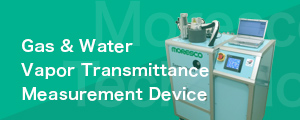High vacuum pump oil: FAQs
- Why are anti-emulsification properties (water separability properties) necessary in oil for oil rotary vacuum pumps?
- If moisture such as water vapor is sucked into a pump, condenses inside the pump and becomes mixed into the oil, then an emulsified state is created. At this time, if the water is not separated off quickly, then there will be a large discharge of gas (water vapor) on the high vacuum side. This will mean that the ultimate pressure will increase and it will corrode the inside of the pump. It is therefore required that the oil has good water separability properties and the water removal is easy.
- Why is heat resistance necessary for vacuum pump oil?
- In order to lower the ultimate pressure, it is required that the oil has excellent heat resistance with little gas released due to the thermal decomposition of the oil. Good heat resistance is also required to reduce the frequency of oil replacement (to extend the service life of the oil).
- What is the meaning of the ultimate pressure indication for the vacuum pump oil?
- This is the minimum pressure that can be obtained when vacuum pump oil is used in the actual operation of a vacuum pump and the pump has reached the steady state after sufficient evacuation. It is necessary for the vapor pressure of the oil to be lower than the limit ultimate pressure of the pump.
- What is the meaning of the pumping speed for oil diffusion pump oil?
- This indicates the exhaust capacity of the diffusion pump. This performance is basically determined by the structure of the diffusion pump, but the molecular weight of the oil diffusion pump oil also has an effect. If the molecular weight is too low, then the vapor pressure becomes too high. Conversely, if the molecular weight is too high, then the pumping speed is reduced.
- What factors affect the service life of oil rotary pump oil? Also, what are the countermeasures for them?
- Here are some typical causes.
• The degree of vacuum is reduced due to the gas sucked in (a substance with a high vapor pressure such as solvent or water)
This can be removed if a small amount is sucked in, but the oil must be replaced if it is a large amount that cannot be separated from the oil.
• Oxidation degradation in use at a low vacuum degree
Strengthen the external cooling of the vacuum pump, or replace the oil with one that has excellent stability regarding heat resistance and oxidation resistance.
• Thermal degradation when gas is sucked in at an extremely high temperature
Install a cooling device on the suction side of the vacuum pump, or replace the oil with one that has excellent stability regarding heat resistance and oxidation resistance.
(NEOVAC SO-M > ST-200 > MR-200A, etc.)
• Contamination due to the suction of powder or solid matter
Use circulation through a filter outside of the system to remove the solids from the vacuum pump oil, or attach a filter on the suction side.
• Deterioration due to the suction of corrosive gas (fluorine and chlorine-based gas)
In the present situation, methods such as removal using an active filter are conceivable, but this varies in effectiveness and cannot be expected to eliminate the damage. - What causes the deterioration of diffusion vacuum pump oil, and what effect does it have on the pump?
- Some of the causes of deterioration are as follows. 1) Thermal degradation due to overheating above the operating temperature. 2) Thermal degradation due to heating when there is insufficient oil. 3) Oxidation degradation due to contact with air when at a high temperature (100°C or higher). 4) Degradation due to contact or mixing with matter sucked in from the vacuum machine. The deterioration of the oil leads to phenomena such as a reduction in the pumping speed, failure of the ultimate pressure and pressure fluctuations due to decomposition products.
- What is the mechanism of an oil rotary pump?
- An oil rotary pump is constructed with a cylinder and a rotor and blades that rotate inside the cylinder. There are three different types, which are classified according to how the rotor is attached to the rotating shaft and according to differences in the shape of the blades.
On the representative rotary vane type oil rotary pumps, when the rotor is rotated with the center of the rotor as the axis, the blades attached to the rotor are in contact with the cylinder wall as they rotate and this compresses the air that enters the pump from the suction inlet. There is a valve on the outlet port and the compressed air pushes the valve upwards and is discharged into the atmosphere. Repeating this process creates a vacuum on the suction side. - What is the function of the oil rotary pump oil?
- On a rotary pump, it is not possible to exhaust all the compressed air from the area around the exhaust valve. The construction of the pump means that there is a space where the compression is not complete. This space is called the "ineffective space." When this space exists, it is not possible to improve the vacuum degree beyond a certain value.
If oil rotary pump oil is sent inside the pump at this time, then the oil fills the ineffective space and also it is not compressed, so it is possible to further reduce the amount of air remaining in the ineffective space. The result of this is that the degree of vacuum can be improved.
In addition to this, oil also functions as a lubricant for smoother sliding between the cylinder, blades and rotor. - What is the mechanism of an oil diffusion pump and what is the function of the oil diffusion pump oil?
- An oil diffusion pump is composed of a boiler section, a jet section and a cylinder section. There are no sections that are moved mechanically.
The oil diffusion pump oil is heated by an electrothermal heater in the boiler so that it becomes a vapor. It is then sprayed as a jet from the nozzles on each stage of the jet section. The gaseous molecules that enter through the suction port collide with the oil vapor molecules in this vapor jet and are given momentum. The gaseous molecules that have been given momentum are compressed to the lower part and carried to the exhaust port by an auxiliary pump (mostly an oil rotary pump). The result of this is that a vacuum state can be obtained in the suction system. On the other hand, the oil vapor molecules that hit the inner wall of the cold cylinder are condensed into a liquid and return to the boiler section to be heated and sprayed again.







